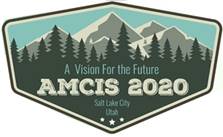Loading...
Paper Type
ERF
Abstract
Fake news, defined as intentionally falsified news, is a ubiquitous term in society and is most often mediated through information technology. Yet fake news is far from new and fields outside of IS possess a rich literature on the phenomenon. This paper describes an ongoing multidisciplinary grounded theory literature review on the current state of fake news research. We include the major fields that have studied the phenomenon, the seminal theories on fake news, its precedents, and its outcomes. This study will potentially reveal not only the theoretical trends and biases within fields but will also synthesize what we know into a holistic view of fake news, drawing from social sciences, business, journalism, communications, information science, and technology. This paper contributes to IS research by providing visibility regarding fake news discoveries in other disciplines, establishing where IS research fits in, and elucidating where commonalities and gaps reside.
Recommended Citation
George, Jordana J.; Torres, Russell; and Gerhart, Natalie, "Foundations of Fake News" (2020). AMCIS 2020 Proceedings. 6.
https://aisel.aisnet.org/amcis2020/meta_research_is/meta_research_is/6
Foundations of Fake News
Fake news, defined as intentionally falsified news, is a ubiquitous term in society and is most often mediated through information technology. Yet fake news is far from new and fields outside of IS possess a rich literature on the phenomenon. This paper describes an ongoing multidisciplinary grounded theory literature review on the current state of fake news research. We include the major fields that have studied the phenomenon, the seminal theories on fake news, its precedents, and its outcomes. This study will potentially reveal not only the theoretical trends and biases within fields but will also synthesize what we know into a holistic view of fake news, drawing from social sciences, business, journalism, communications, information science, and technology. This paper contributes to IS research by providing visibility regarding fake news discoveries in other disciplines, establishing where IS research fits in, and elucidating where commonalities and gaps reside.
When commenting on articles, please be friendly, welcoming, respectful and abide by the AIS eLibrary Discussion Thread Code of Conduct posted here.



